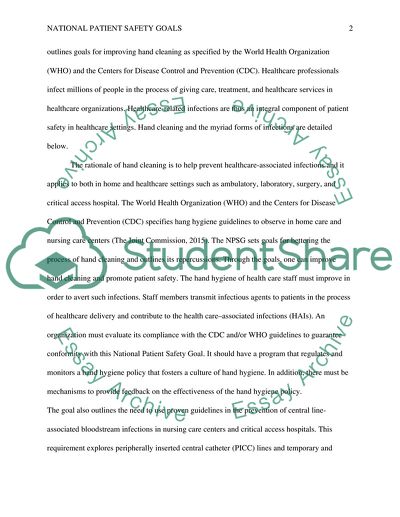Cite this document
(“Current National Patient Safety Goals Essay Example | Topics and Well Written Essays - 1250 words”, n.d.)
Retrieved from https://studentshare.org/nursing/1696809-current-national-safety-goals-why-were-they-implemented-and-what-have-they-achieved
Retrieved from https://studentshare.org/nursing/1696809-current-national-safety-goals-why-were-they-implemented-and-what-have-they-achieved
(Current National Patient Safety Goals Essay Example | Topics and Well Written Essays - 1250 Words)
https://studentshare.org/nursing/1696809-current-national-safety-goals-why-were-they-implemented-and-what-have-they-achieved.
https://studentshare.org/nursing/1696809-current-national-safety-goals-why-were-they-implemented-and-what-have-they-achieved.
“Current National Patient Safety Goals Essay Example | Topics and Well Written Essays - 1250 Words”, n.d. https://studentshare.org/nursing/1696809-current-national-safety-goals-why-were-they-implemented-and-what-have-they-achieved.


